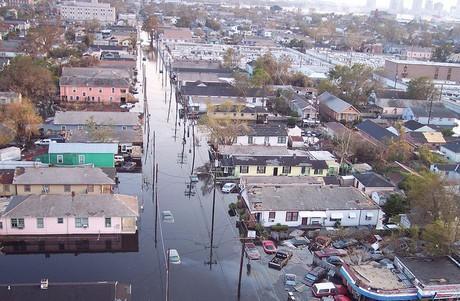If you fill out the "Forgot Password" form but don't get an email to reset your password within 5-10 minutes, please email logistics@ire.org for assistance.

In the wake of any natural disaster, there’s a seemingly endless number of public service and accountability stories to chase. You want to know when the power is going to come back on. How many people have been displaced, injured and (in the worst storms) killed. Did officials take the right precautions?
We often focus on the toll these disasters take on individuals, but there’s another important frame to consider – an economic one. Businesses are damaged, some never to open again. Workers get laid off. The long-term impact is huge.
Fortunately, the Bureau of Labor Statistics has made it a little easier for reporters to assess the potential economic impact of storms like Hurricane Matthew. The bureau used flood zone maps and geocoded employment data to calculate the number of businesses at risk during a hurricane. The 2012 data also includes the average number of employees working in these zones, as well as the total quarterly wages. You can look at the data on a state and county level, which makes it a great tool for local and national reporters alike.
So, for instance, you could report that:
- In Florida, an average of 1.4 million employees working at 127,433 businesses could have been affected by Hurricane Matthew, a Category 4 storm. Nearly 4,000 of those businesses are in Duval County (Jacksonville), Florida.
- In Charleston, South Carolina, 6,820 businesses were found in the flood zone for a Category 4 storm. The total quarterly wages at stake? $1.2 billion.
Tips for further reporting:
- Broaden your scope. Did water pour into your favorite local restaurant? Maybe a popular small business ended up with serious damage. We see lots of stories about the fates of one or two businesses in the wake of a storm. Use the BLS data to zoom out and add context. That restaurant was just one of X-number of businesses in the flood zone in your county.
- Which industries are at risk? The hurricane zone data doesn’t drill down that far, but there are some workarounds. For instance, you could look up the most prominent industries in a specific county. That could give you some good leads on where to focus your in-person reporting efforts. (Jump to the bottom of this post for more details on how to look up information on industries.)
- Watch for people filing for unemployment. If businesses are damaged or destroyed, it’s likely that many employees will be temporarily, if not permanently, laid off. Keep tabs on the Unemployment Insurance Weekly Claims Data, which is updated every Thursday by the Department of Labor. It might take a couple week or months for the numbers to go up, so check it regularly.
Learn more about the data on the BLS flood zone FAQ page.
Tips for looking up prominent industries:
Use the Quarterly Census of Employment and Wages table builder.
You might be wondering, what are “location quotients” and why sort on them? Location quotients are ratios that allow us to see if a specific industry has a greater share of employment compared to the nation as a whole. David Hiles of the Bureau of Labor Statistics explains:
If an LQ is equal to 1, then the industry has the same share of its area employment as it does in the nation. An LQ greater than 1 indicates an industry with a greater share of the local area employment than is the case nationwide. For example, Las Vegas will have an LQ greater than 1 in the Leisure and Hospitality industry because this industry makes up a larger share of the Las Vegas employment total than it does for the nation as a whole.

Looks like you haven't made a choice yet.